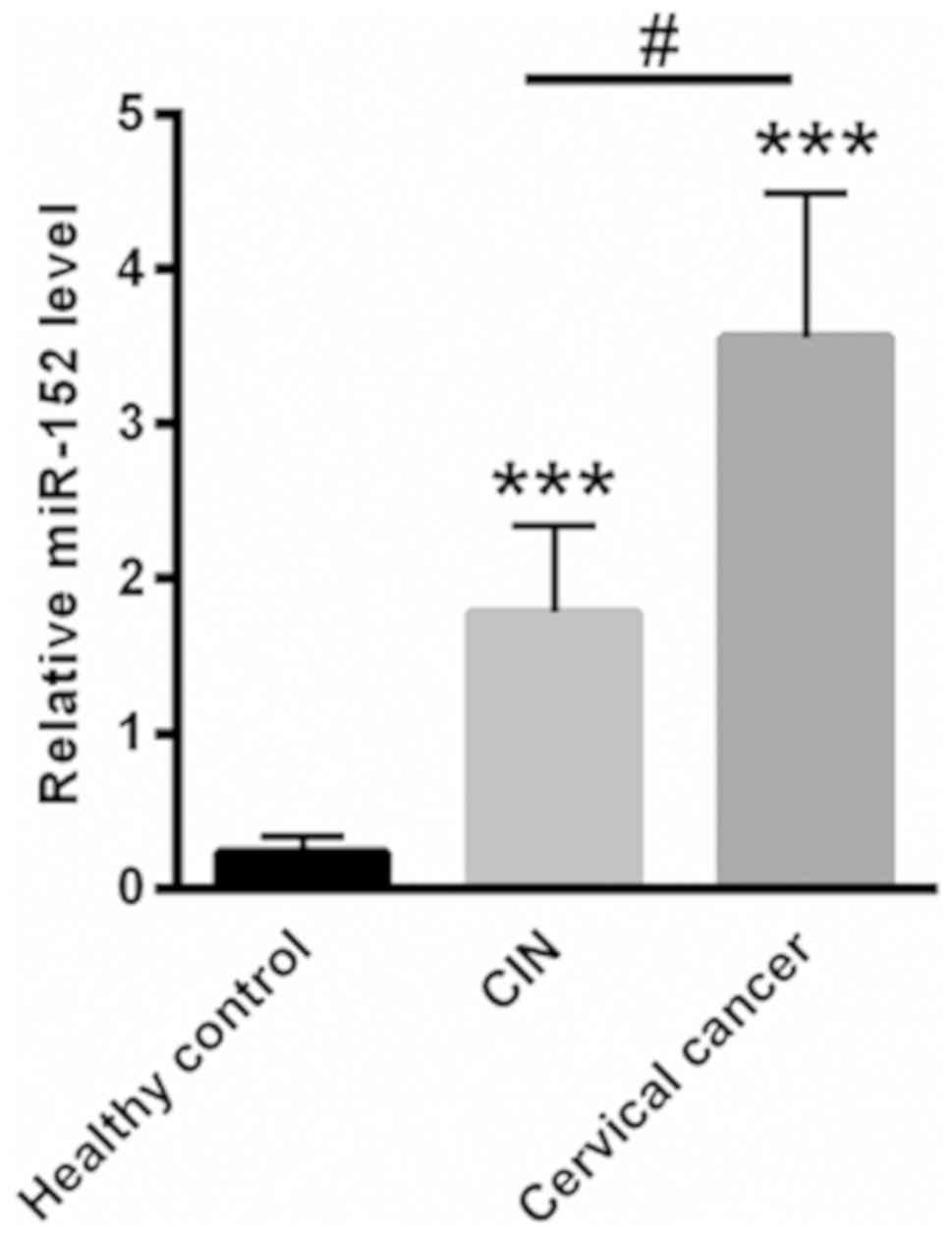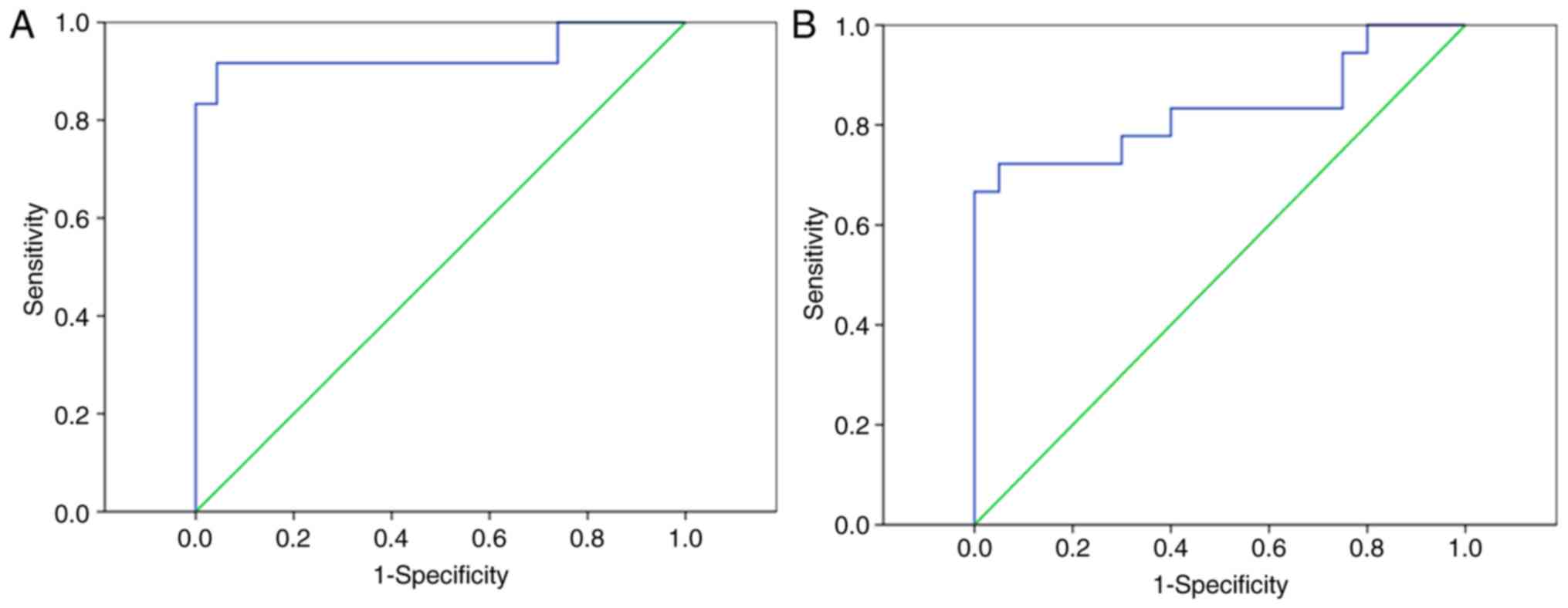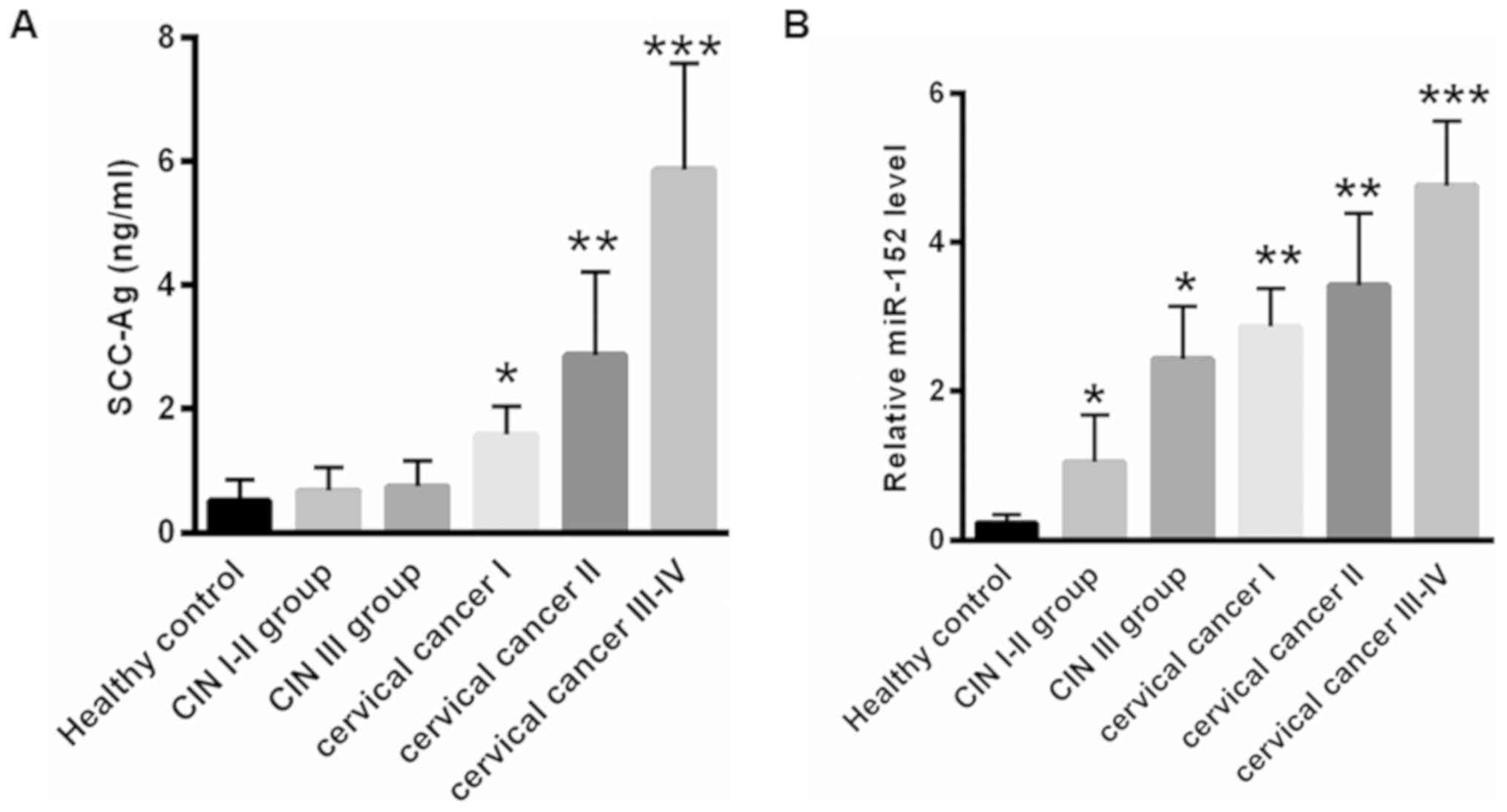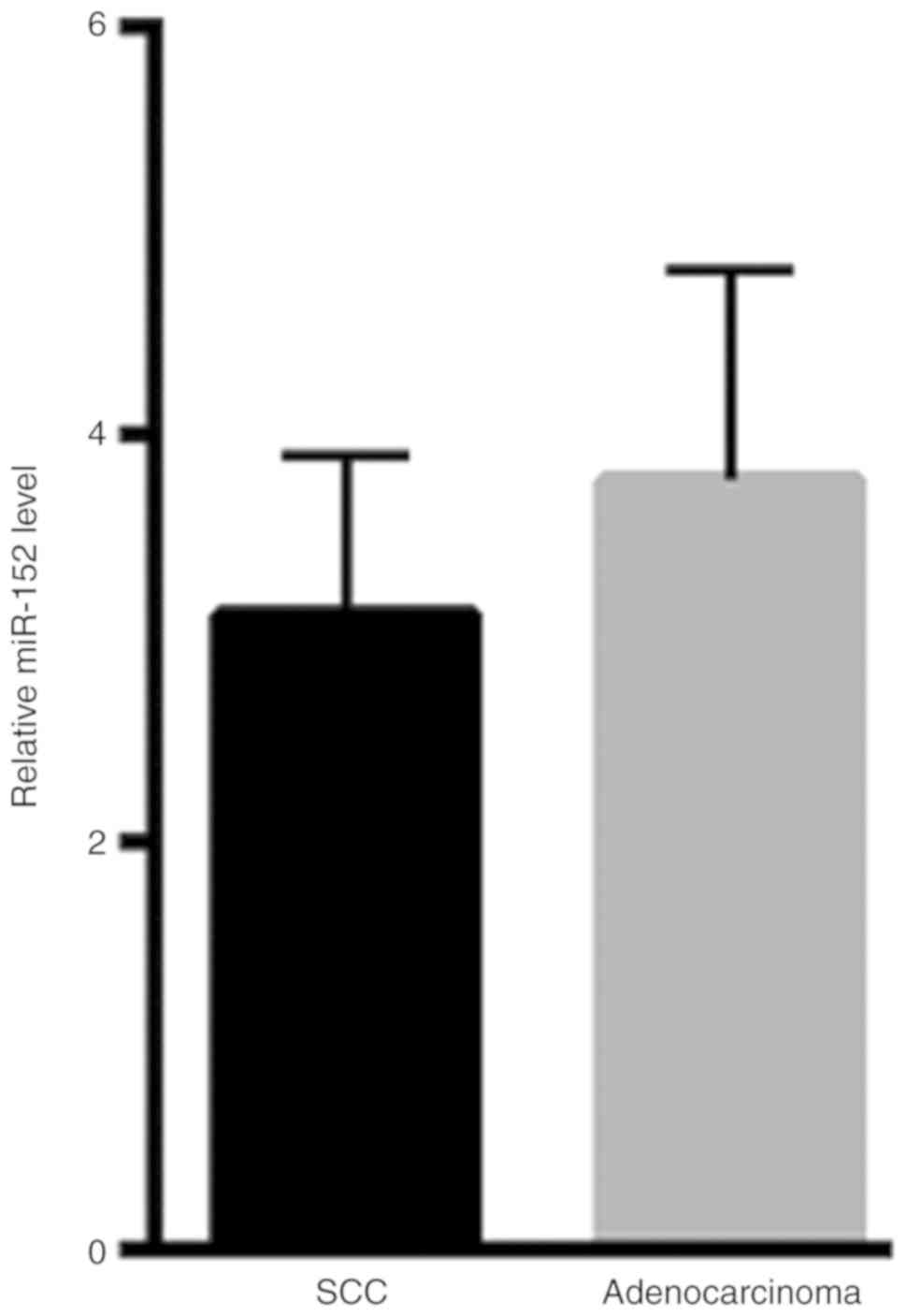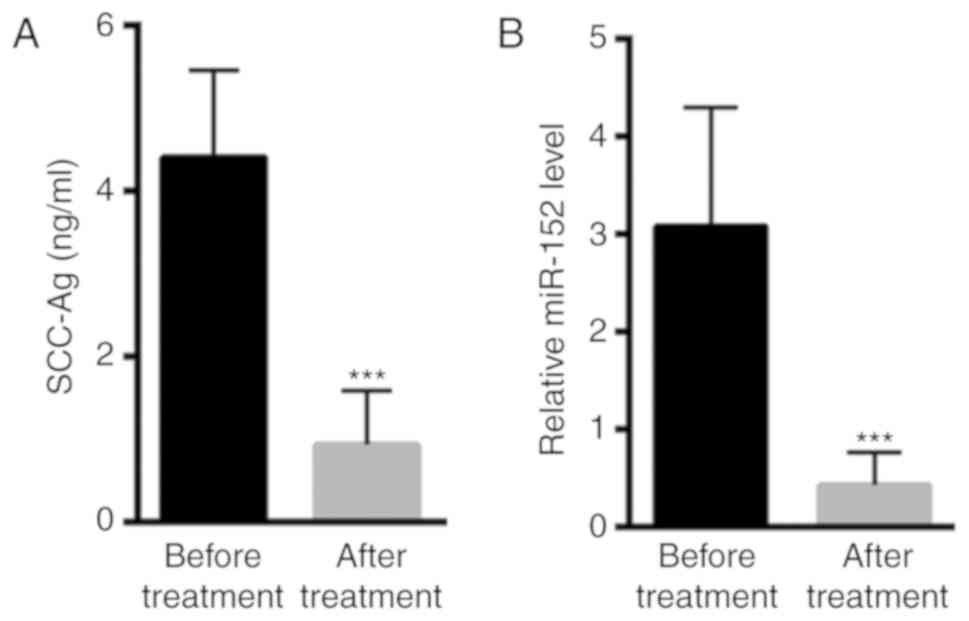|
1
|
Luttmer R, De Strooper LM, Steenbergen RD,
Berkhof J, Snijders PJ, Heideman DA and Meijer CJ: Management of
high-risk HPV-positive women for detection of cervical (pre)cancer.
Expert Rev Mol Diagn. 16:961–974. 2016. View Article : Google Scholar : PubMed/NCBI
|
|
2
|
El-Zein M, Richardson L and Franco EL:
Cervical cancer screening of HPV vaccinated populations: Cytology,
molecular testing, both or none. J Clin Virol. 76 (Suppl
1):S62–S68. 2016. View Article : Google Scholar : PubMed/NCBI
|
|
3
|
Jayasinghe Y, Rangiah C, Gorelik A,
Ogilvie G, Wark JD, Hartley S and Garland SM: Primary HPV DNA based
cervical cancer screening at 25 years: Views of young Australian
women aged 16–28 years. J Clin Virol. 76 (Suppl 1):S74–S80. 2016.
View Article : Google Scholar : PubMed/NCBI
|
|
4
|
Hasahya OT, Berggren V, Sematimba D,
Nabirye RC and Kumakech E: Beliefs, perceptions and health-seeking
behaviours in relation to cervical cancer: A qualitative study
among women in Uganda following completion of an HPV vaccination
campaign. Glob Health Action. 9:293362016. View Article : Google Scholar : PubMed/NCBI
|
|
5
|
Lofters A and Vahabi M: Self-sampling for
HPV to enhance uptake of cervical cancer screening: Has the time
come in Canada? CMAJ. 188:853–854. 2016. View Article : Google Scholar : PubMed/NCBI
|
|
6
|
Lowy DR: HPV vaccination to prevent
cervical cancer and other HPV-associated disease: From basic
science to effective interventions. J Clin Invest. 126:5–11. 2016.
View Article : Google Scholar : PubMed/NCBI
|
|
7
|
Salvatici M, Achilarre MT, Sandri MT,
Boveri S, Vanna Z and Landoni F: Squamous cell carcinoma antigen
(SCC-Ag) during follow-up of cervical cancer patients: Role in the
early diagnosis of recurrence. Gynecol Oncol. 142:115–119. 2016.
View Article : Google Scholar : PubMed/NCBI
|
|
8
|
Micke O, Prott FJ, Schäfer U, Tangerding
S, Pötter R and Willich N: The impact of squamous cell carcinoma
(SCC) antigen in the follow-up after radiotherapy in patients with
cervical cancer. Anticancer Res. 20:5113–5115. 2000.PubMed/NCBI
|
|
9
|
Nozawa S, Kojima M, Tukazaki K, Sakayori
M, Iizuka R and Kagiyama N: In vitro and in vivo induction of
squamous cell carcinoma antigen (SCC) in a uterine cervical cancer
cell line (SKG-IIIa) with peplomycin and sodium butyrate. Asia
Oceania J Obstet Gynaecol. 16:153–160. 1990. View Article : Google Scholar : PubMed/NCBI
|
|
10
|
Yamashita Y, Uehara T, Hasegawa M, Deng Z,
Matayoshi S, Kiyuna A, Kondo S, Maeda H, Ganaha A and Suzuki M:
Squamous cell carcinoma antigen as a diagnostic marker of nasal
inverted papilloma. Am J Rhinol Allergy. 30:122–127. 2016.
View Article : Google Scholar : PubMed/NCBI
|
|
11
|
Yao J, Zhang P, Li J and Xu W:
MicroRNA-215 acts as a tumor suppressor in breast cancer by
targeting AKT serine/threonine kinase 1. Oncol Lett. 14:1097–1104.
2017. View Article : Google Scholar : PubMed/NCBI
|
|
12
|
Sempere LF, Keto J and Fabbri M: Exosomal
MicroRNAs in breast cancer towards diagnostic and therapeutic
applications. Cancers (Basel). 9:E712017. View Article : Google Scholar : PubMed/NCBI
|
|
13
|
Wang J, Yan F, Zhao Q, Zhan F, Wang R,
Wang L, Zhang Y and Huang X: Circulating exosomal miR-125a-3p as a
novel biomarker for early-stage colon cancer. Sci Rep. 7:41502017.
View Article : Google Scholar : PubMed/NCBI
|
|
14
|
Zhang ZQ, Meng H, Wang N, Liang LN, Liu
LN, Lu SM and Luan Y: Serum microRNA 143 and microRNA 215 as
potential biomarkers for the diagnosis of chronic hepatitis and
hepatocellular carcinoma. Diagn Pathol. 9:1352014. View Article : Google Scholar : PubMed/NCBI
|
|
15
|
Lacedonia D, Palladino GP,
Foschino-Barbaro MP, Scioscia G and Carpagnano GE: Expression
profiling of miRNA-145 and miRNA-338 in serum and sputum of
patients with COPD, asthma, and asthma-COPD overlap syndrome
phenotype. Int J Chron Obstruct Pulmon Dis. 12:1811–1817. 2017.
View Article : Google Scholar : PubMed/NCBI
|
|
16
|
Zhang X, Yang R, Hu BL, Lu P, Zhou LL, He
ZY, Wu HM and Zhu JH: Reduced circulating levels of miR-433 and
miR-133b are potential biomarkers for Parkinson's disease. Front
Cell Neurosci. 11:1702017. View Article : Google Scholar : PubMed/NCBI
|
|
17
|
Tang XL, Lin L, Song LN and Tang XH:
Hypoxia-inducible miR-152 suppresses the expression of WNT1 and
ERBB3, and inhibits the proliferation of cervical cancer cells. Exp
Biol Med (Maywood). 241:1429–1437. 2016. View Article : Google Scholar : PubMed/NCBI
|
|
18
|
Miao C, Zhang J, Zhao K, Liang C, Xu A,
Zhu J, Wang Y, Hua Y, Tian Y, Liu S, et al: The significance of
microRNA-148/152 family as a prognostic factor in multiple human
malignancies: A meta-analysis. Oncotarget. 8:43344–43355. 2017.
View Article : Google Scholar : PubMed/NCBI
|
|
19
|
Chen H, Liu H, Zou H, Chen R, Dou Y, Sheng
S, Dai S, Ai J, Melson J, Kittles RA, et al: Evaluation of plasma
miR-21 and miR-152 as diagnostic biomarkers for common types of
human cancers. J Cancer. 7:490–499. 2016. View Article : Google Scholar : PubMed/NCBI
|
|
20
|
Dou H, Wang Y, Su G and Zhao S: Decreased
plasma let-7c and miR-152 as noninvasive biomarker for
non-small-cell lung cancer. Int J Clin Exp Med. 8:9291–9298.
2015.PubMed/NCBI
|
|
21
|
Pecorelli S: Revised FIGO staging for
carcinoma of the vulva, cervix, and endometrium. Int J Gynaecol
Obstet. 105:103–104. 2009. View Article : Google Scholar : PubMed/NCBI
|
|
22
|
Livak KJ and Schmittgen TD: Analysis of
relative gene expression data using real-time quantitative PCR and
the 2(-Delta Delta C(T)) method. Methods. 25:402–408. 2001.
View Article : Google Scholar : PubMed/NCBI
|
|
23
|
Wen YF, Cheng TT, Chen XL, Huang WJ, Peng
HH, Zhou TC, Lin XD and Zeng LS: Elevated circulating tumor cells
and squamous cell carcinoma antigen levels predict poor survival
for patients with locally advanced cervical cancer treated with
radiotherapy. PLoS One. 13:e02043342018. View Article : Google Scholar : PubMed/NCBI
|
|
24
|
Hung YC, Shiau YC, Chang WC, Kao CH and
Lin CC: Early predicting recurrent cervical cancer with combination
of tissue polypeptide specific antigen (TPS) and squamous cell
carcinoma antigen (SCC). Neoplasma. 49:415–417. 2002.PubMed/NCBI
|
|
25
|
Nagamitsu Y, Nishi H, Sasaki T, Takaesu Y,
Terauchi F and Isaka K: Profiling analysis of circulating microRNA
expression in cervical cancer. Mol Clin Oncol. 5:189–194. 2016.
View Article : Google Scholar : PubMed/NCBI
|
|
26
|
Granados-López AJ, Ruiz-Carrillo JL,
Servín-González LS, Martínez-Rodríguez JL, Reyes-Estrada CA,
Gutiérrez- Hernández R and López JA: Use of mature miRNA strand
selection in miRNAs families in cervical cancer development. Int J
Mol Sci. 18:E4072017. View Article : Google Scholar : PubMed/NCBI
|
|
27
|
Gao D, Zhang Y, Zhu M, Liu S and Wang X:
miRNA expression profiles of HPV-infected patients with cervical
cancer in the Uyghur population in China. PLoS One.
11:e01647012016. View Article : Google Scholar : PubMed/NCBI
|
|
28
|
Liu B, Ding JF, Luo J, Lu L, Yang F and
Tan XD: Seven protective miRNA signatures for prognosis of cervical
cancer. Oncotarget. 7:56690–56698. 2016.PubMed/NCBI
|
|
29
|
Zhao S, Yao D, Chen J and Ding N:
Circulating miRNA-20a and miRNA-203 for screening lymph node
metastasis in early stage cervical cancer. Genet Test Mol
Biomarkers. 17:631–636. 2013. View Article : Google Scholar : PubMed/NCBI
|
|
30
|
Zhao C, Lu F and Chen H, Zhao F, Zhu Z,
Zhao X and Chen H: Clinical significance of circulating miRNA
detection in lung cancer. Med Oncol. 33:412016. View Article : Google Scholar : PubMed/NCBI
|
|
31
|
Ponomaryova AA, Morozkin ES, Rykova EY,
Zaporozhchenko IA, Skvortsova TE, Dobrodeev АY, Zavyalov AA,
Tuzikov SA, Vlassov VV, Cherdyntseva NV, et al: Dynamic changes in
circulating miRNA levels in response to antitumor therapy of lung
cancer. Exp Lung Res. 42:95–102. 2016. View Article : Google Scholar : PubMed/NCBI
|
|
32
|
Qu K, Zhang X, Lin T, Liu T, Wang Z, Liu
S, Zhou L, Wei J, Chang H, Li K, et al: Circulating miRNA-21-5p as
a diagnostic biomarker for pancreatic cancer: Evidence from
comprehensive miRNA expression profiling analysis and clinical
validation. Sci Rep. 7:16922017. View Article : Google Scholar : PubMed/NCBI
|
|
33
|
Sharova E, Grassi A, Marcer A, Ruggero K,
Pinto F, Bassi P, Zanovello P, Zattoni F, D'Agostino DM, Iafrate M
and Ciminale V: A circulating miRNA assay as a first-line test for
prostate cancer screening. Br J Cancer. 114:1362–1366. 2016.
View Article : Google Scholar : PubMed/NCBI
|
|
34
|
Yuwen DL, Sheng BB, Liu J, Wenyu W and Shu
YQ: MiR-146a-5p level in serum exosomes predicts therapeutic effect
of cisplatin in non-small cell lung cancer. Eur Rev Med Pharmacol
Sci. 21:2650–2658. 2017.PubMed/NCBI
|
|
35
|
Dasari S, Wudayagiri R and Valluru L:
Cervical cancer: Biomarkers for diagnosis and treatment. Clin Chim
Acta. 445:7–11. 2015. View Article : Google Scholar : PubMed/NCBI
|
|
36
|
Huang S, Li X and Zhu H: MicroRNA-152
targets phosphatase and tensin homolog to inhibit apoptosis and
promote cell migration of nasopharyngeal carcinoma cells. Med Sci
Monit. 22:4330–4337. 2016. View Article : Google Scholar : PubMed/NCBI
|



